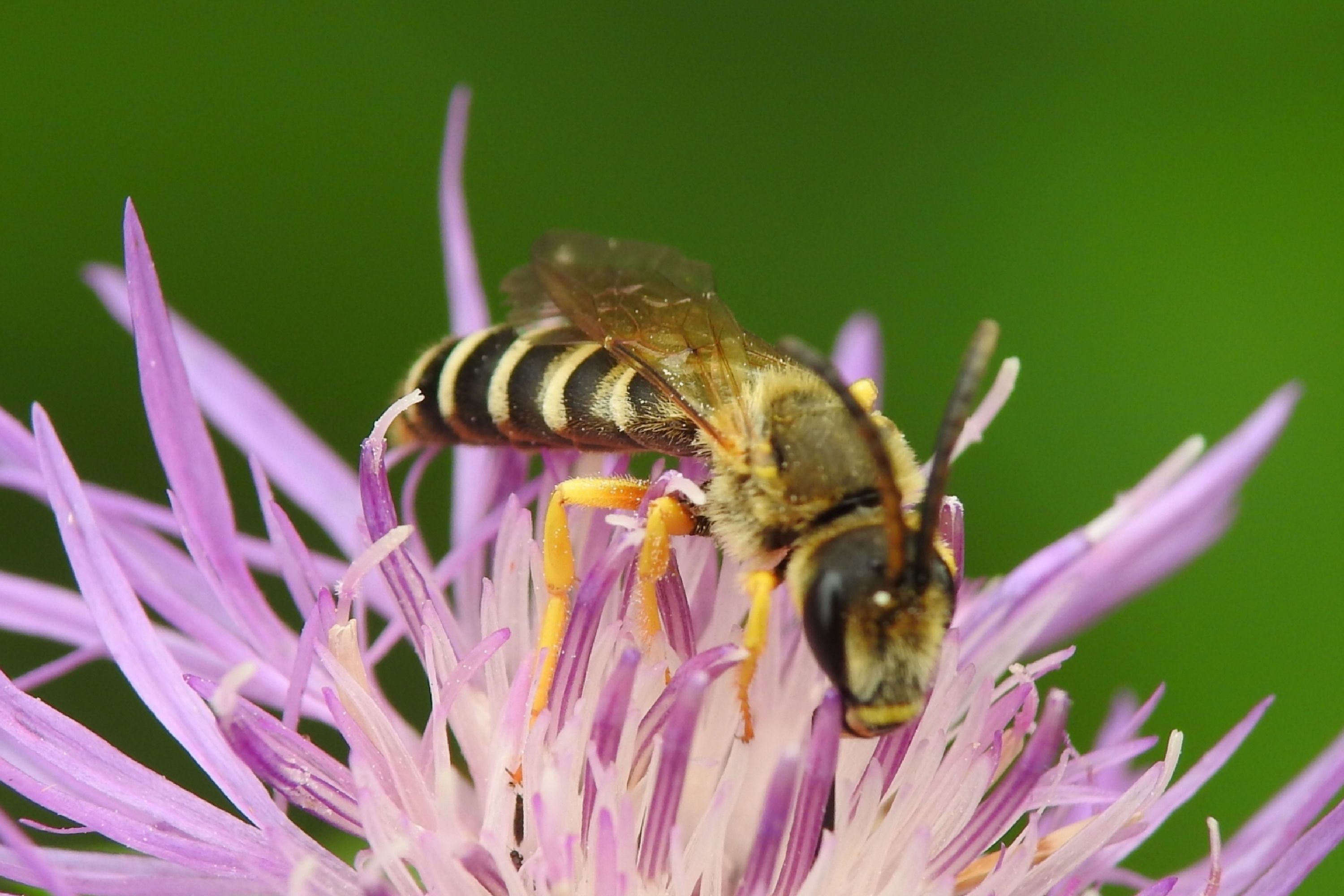Ligated Furrow Bee
(Halictus ligatus)

Description
Halictus ligatus is a species of sweat bee from the family Halictidae, among the species that mine or burrow into the ground to create their nests.H. ligatus, like Lasioglossum zephyrus, is a primitively eusocial bee species, in which aggression is one of the most influential behaviors for establishing hierarchy within the colony, and H. ligatus exhibits both reproductive division of labor and overlapping generations. Halictus ligatus was originally described by Thomas Say in 1837. The genus name Halictus refers to a group of sweat bees of the family Halictidae and order Hymenoptera known for their eusocial behavior and underground nesting. Within Halictidae, the subfamily Halictinae is unique for the substantial diversity in social behavior exhibited among species or within species, such as in H. rubicundus. For instance, species of this subfamily may exhibit either solitary nesting, communal nesting, cleptoparasitism, social parasitism, or primitive eusociality similar to H. ligatus. The appearance of H. ligatus individuals closely resembles other members of the genus Halictus. These individuals are easily differentiated from those of the closely related Lasioglossum by the presence of their pale fasciae hair bands on the posterior margins of the metasomal terga. In addition, the species is predominantly black or brown-black and lacks the faint metallic tints found in bees of the Seladonia subgenus. Moreover, species of Halictus are generally larger than species of Seladonia which are typically under 7 mm long. H. ligatus females are easily distinguished from other females by a postero-ventral genal tooth.In addition, the males are easily distinguished from other males by the presence of long suberect hairs on the second and third metasomal sterna.
Taxonomic tree:







